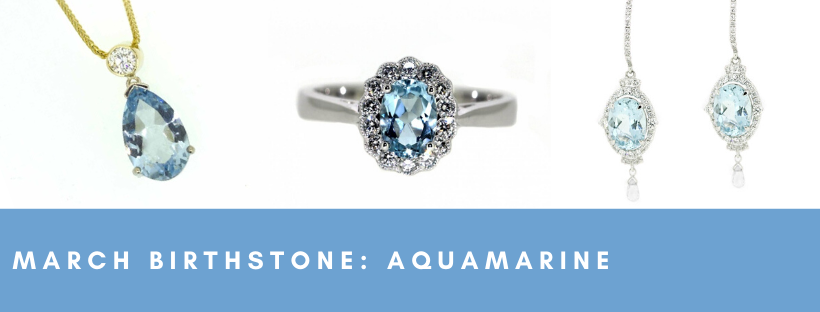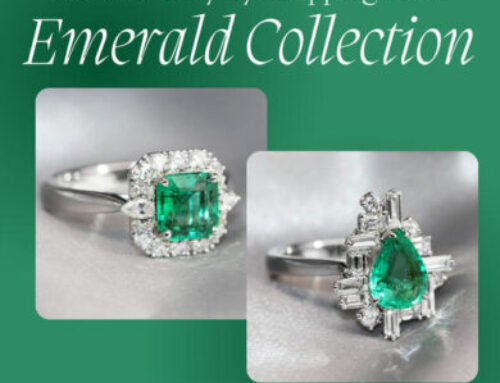The birthstone for March is the blue-green Aquamarine, which comes from the Latin word for “seawater”. Aquamarines are a part of the Beryl family, along with other gems such as emerald and can be found high up in the mountains of Pakistan.
In lore, aquamarine was said to provide good luck to sailors at sea as it was believed to be the treasure of mermaids. Today, people still use it as a token of protection when travelling over oceans.
When it comes to selecting a high-quality gemstone we look at four factors; the colour, cut, clarity and carat.
Colour:
Aquamarines don’t have a large range of colours, however, the deeper and more intense blues have more value.
The gemstones are pleochroic which means they appear differently in different lighting and cuts. So whilst it might look translucent on one angle it might be a deep blue on another. It largely depends on the cut of the stone.
The colour of the gem also depends on the location that it’s found and their size.
Cut:
The gemstone grows in a six-sided prismatic formation, so it generally suits an emerald cut best. However, the stone is quite versatile and can be cut into any style. Due to the hardness and transparency of the stone
Cutting Aquamarine in particular ways will affect the colours that shine through.
Clarity:
Once a gem is cut is generally becomes ‘eye clean’, meaning that to the naked eye, the gem is clear. Some may have inclusions which could be anything from apatite, epidote, garnet to quartz and tourmaline. These can add uniqueness to a gem but when it comes to ranking clarity, it’s good to have a clean stone.
Carat:
Aquamarines come in a wide range of sizes, some weighing in at 45kg. Whilst we generally assume bigger is better, large gemstones are harder to use in jewellery so the demand for these large gems is low, which affects the price per carat.
View our stunning range of aquamarine jewellery here.







